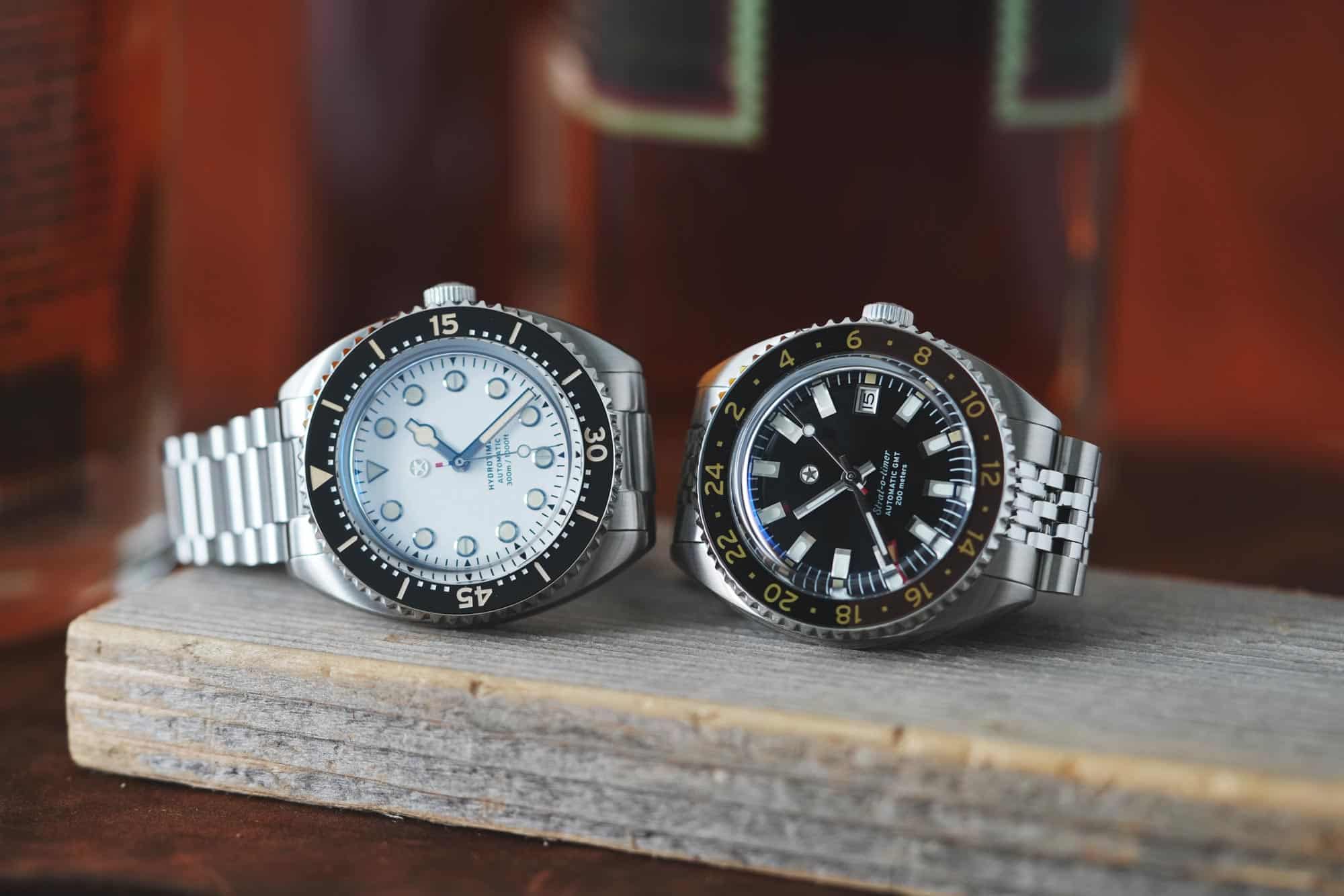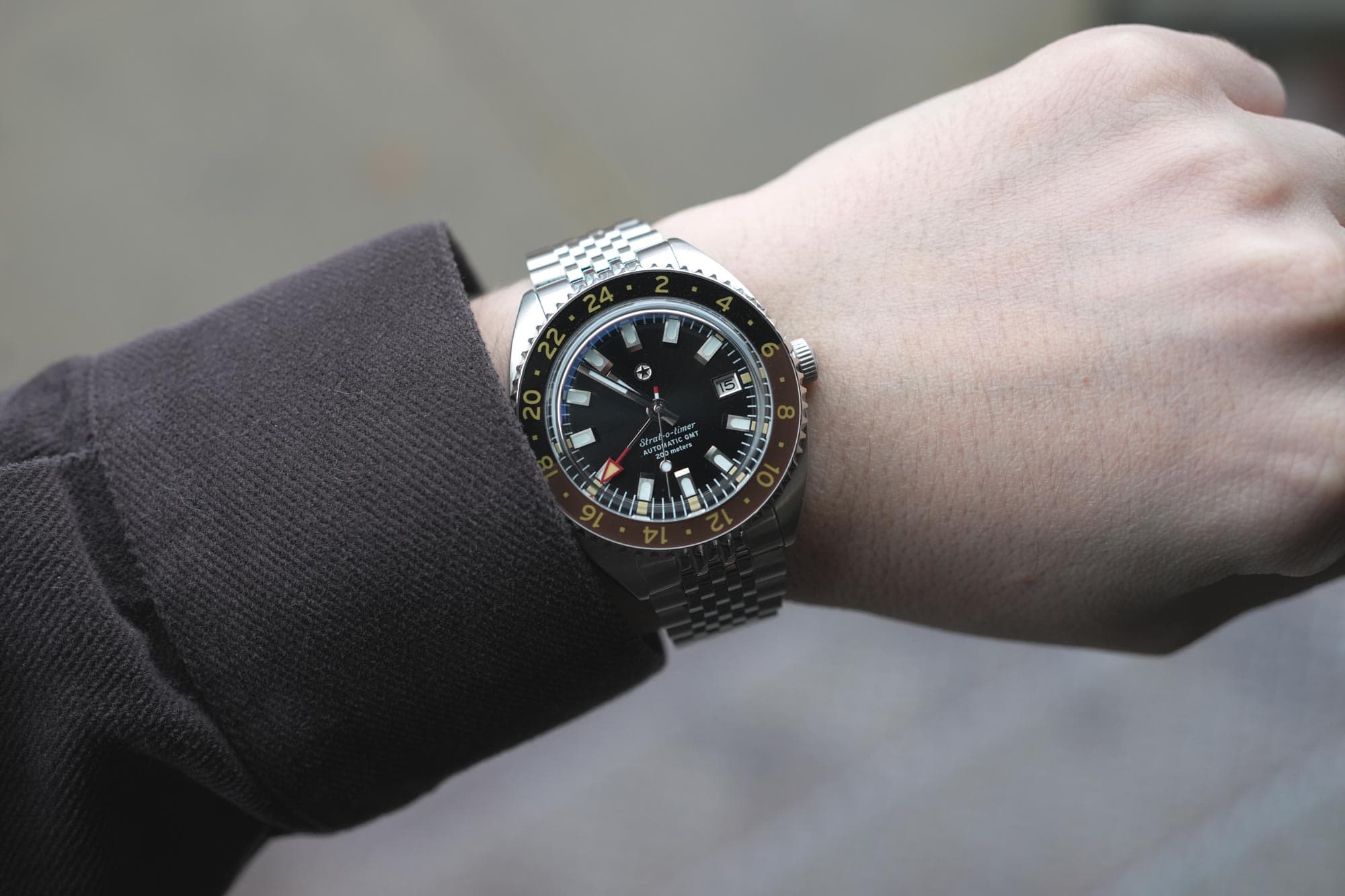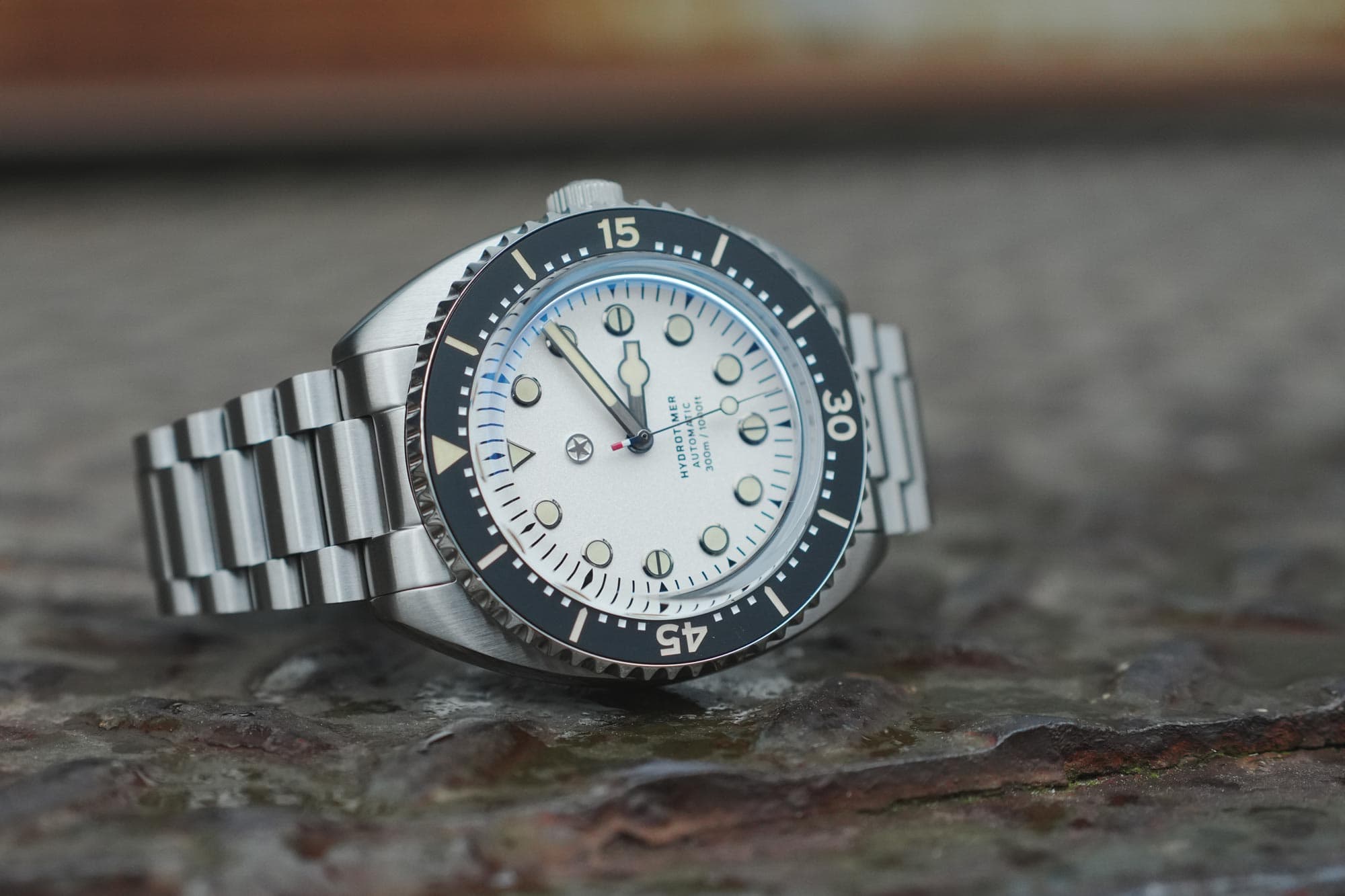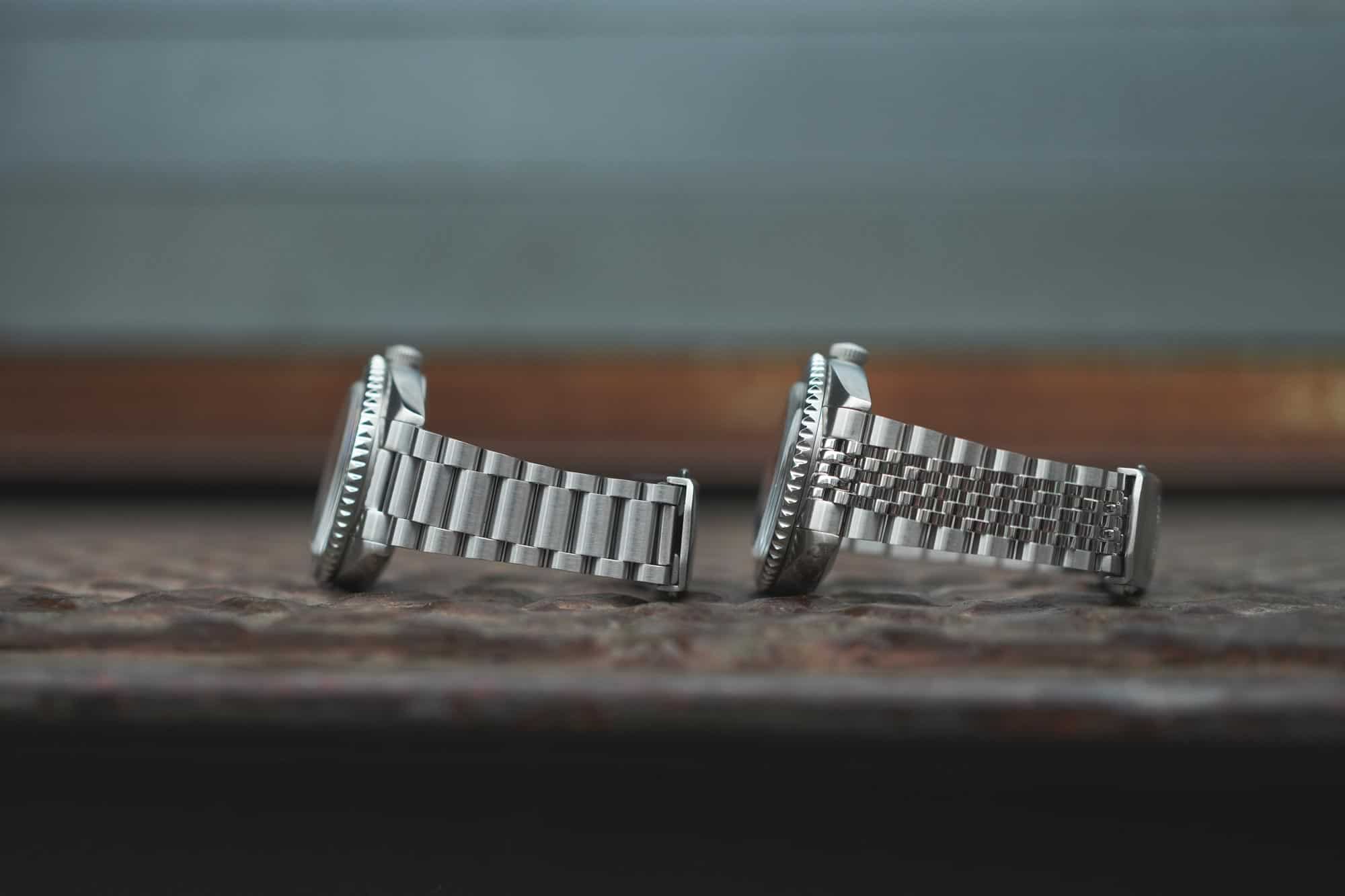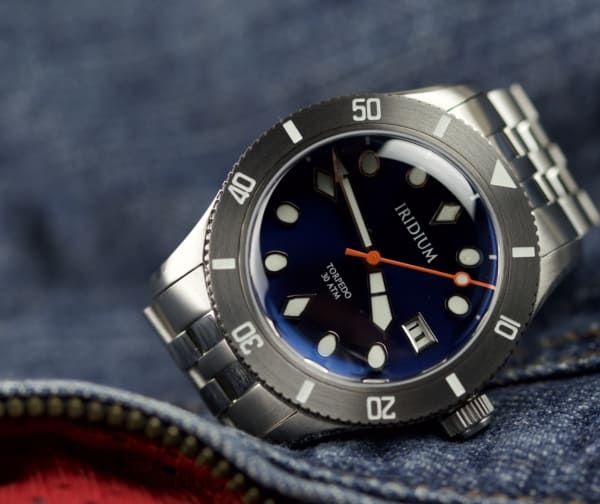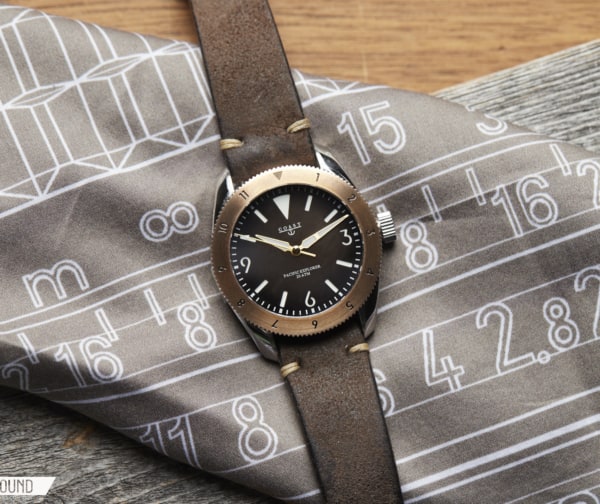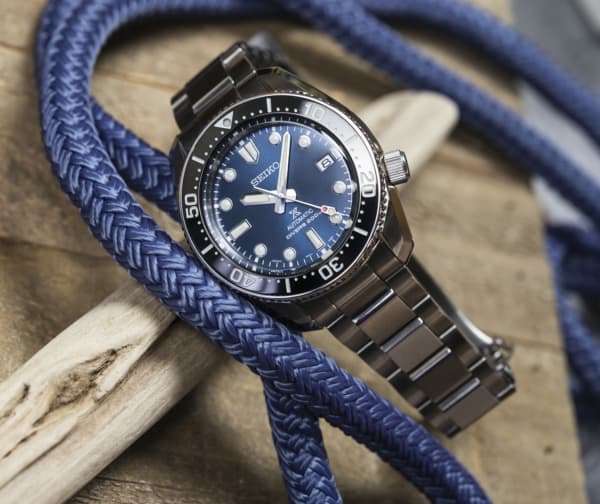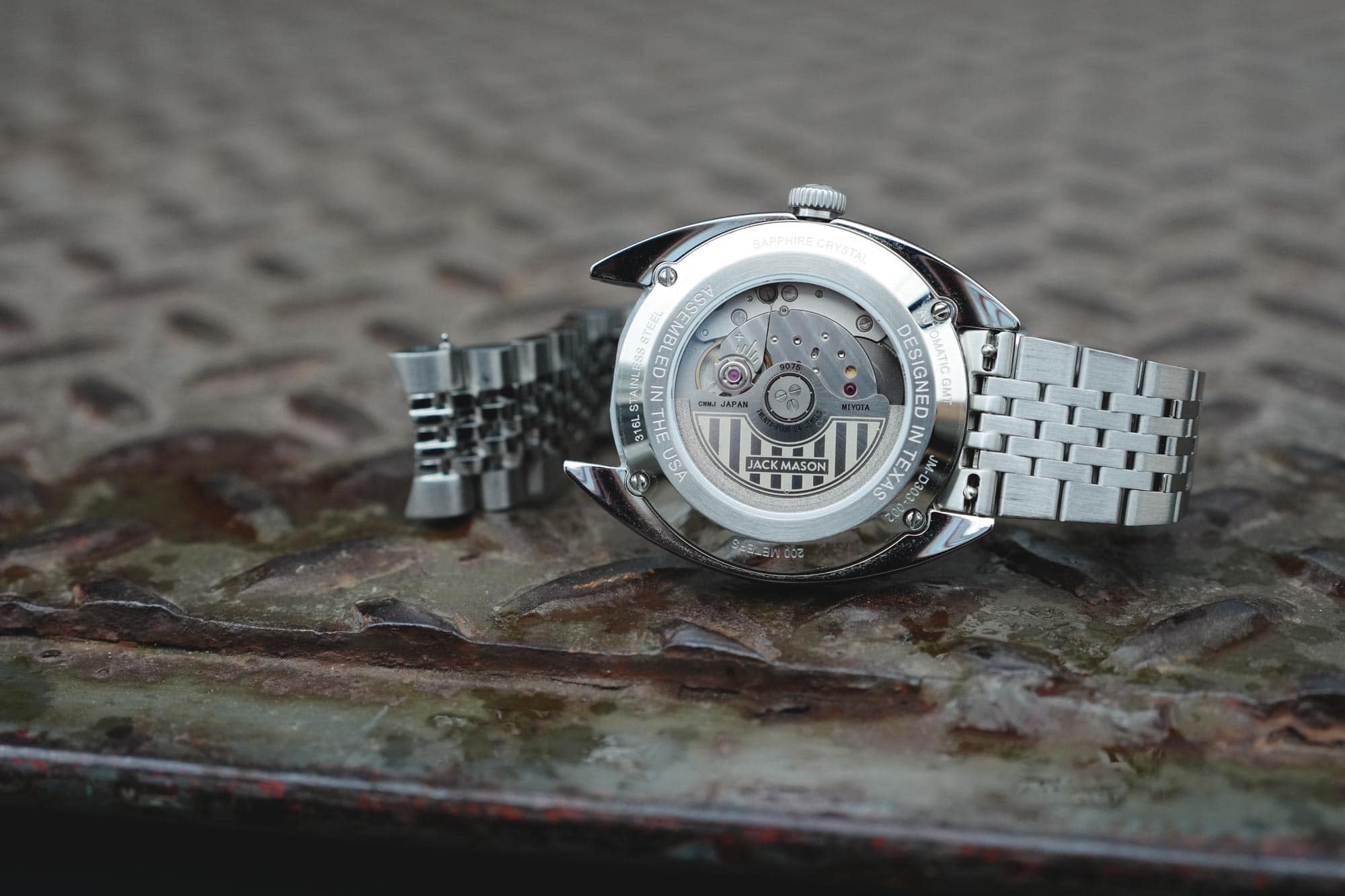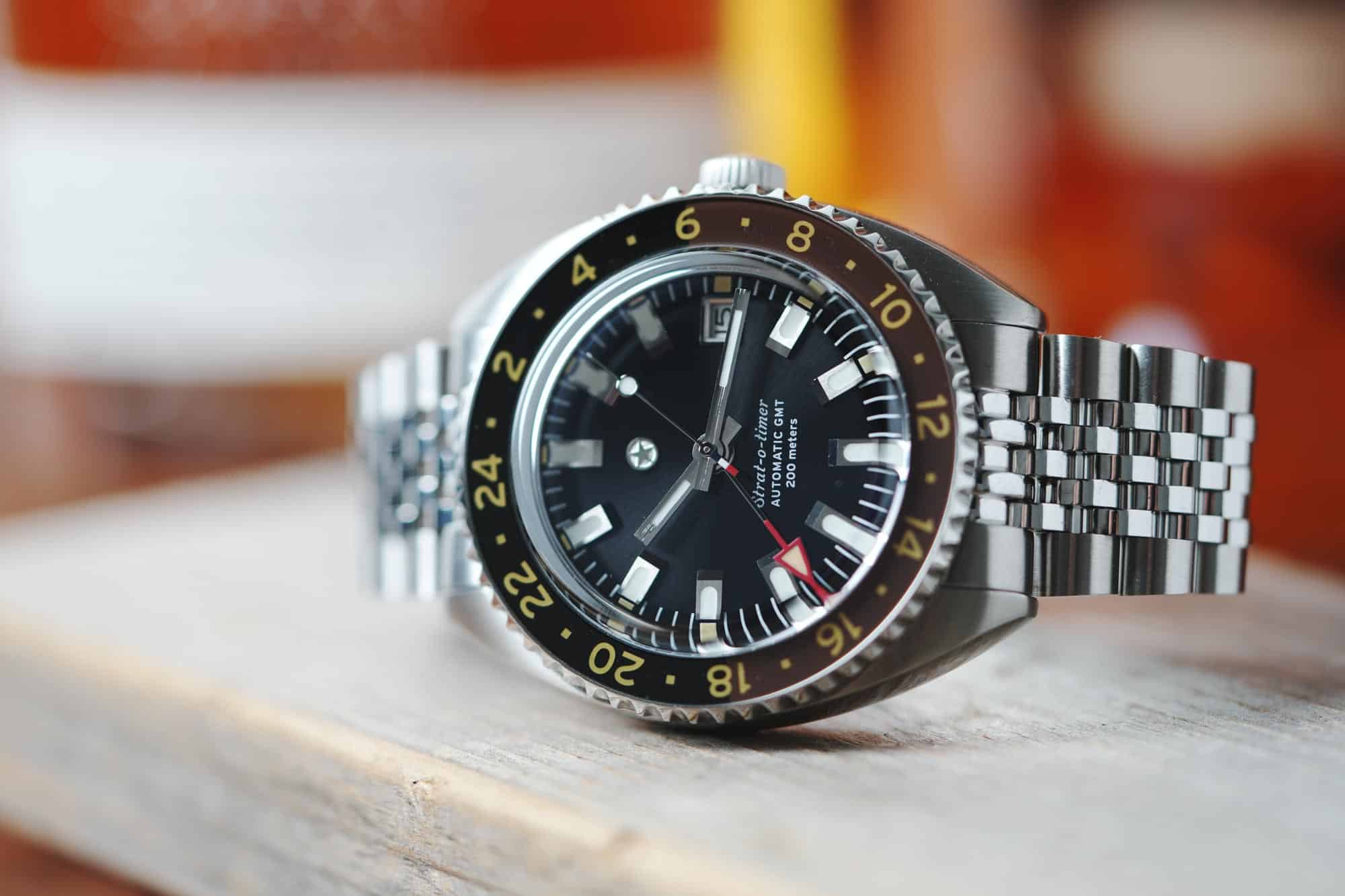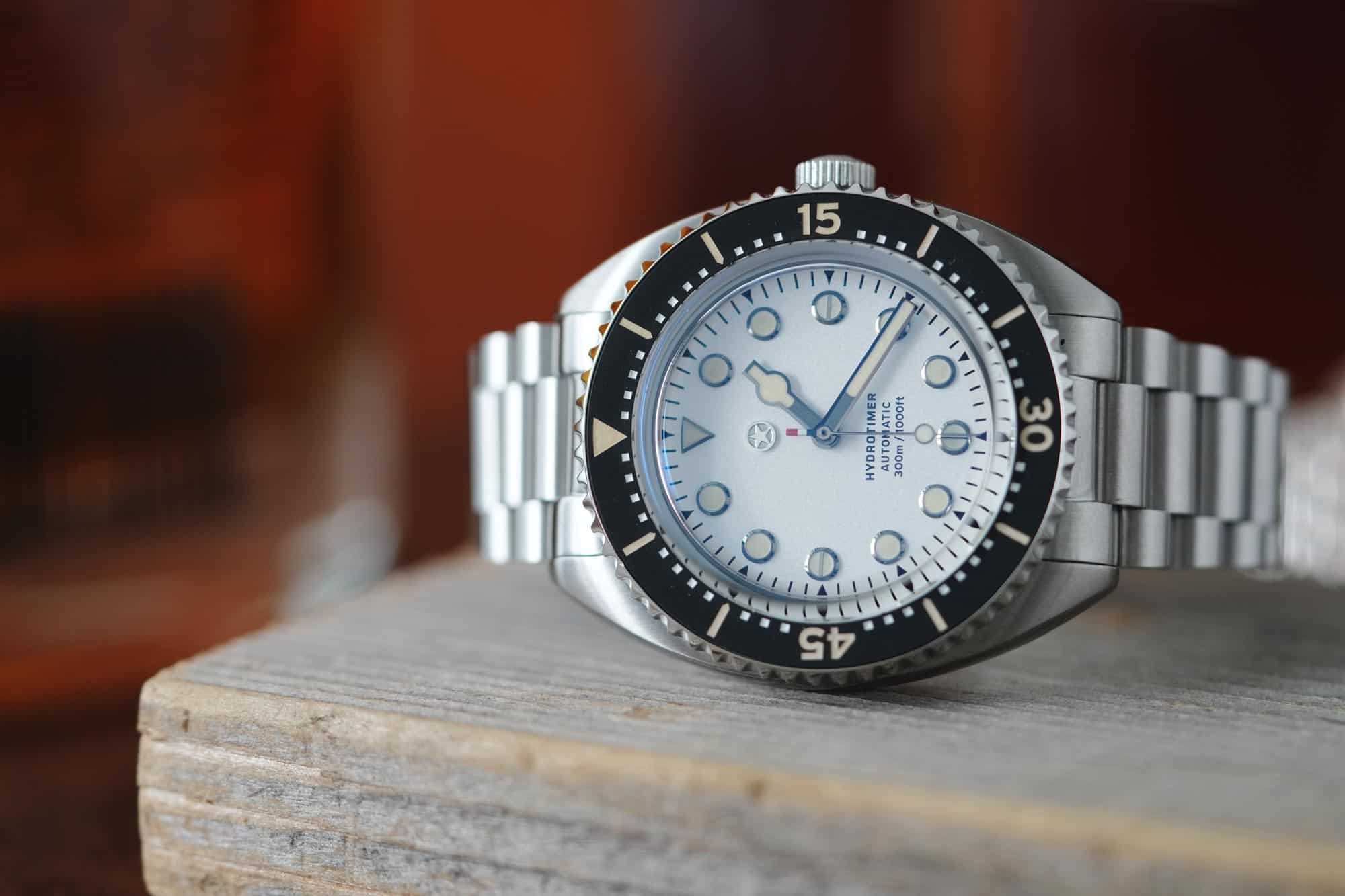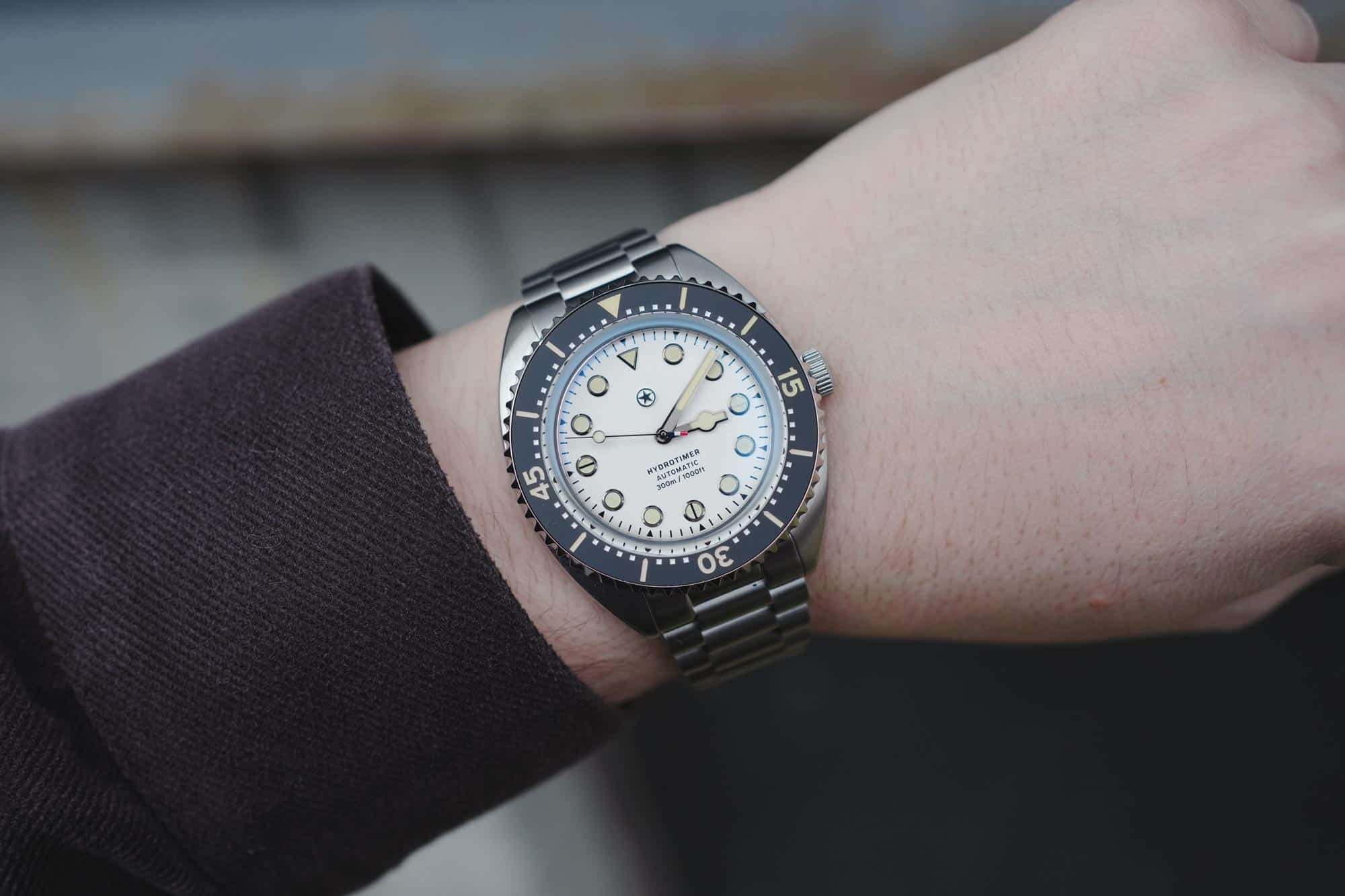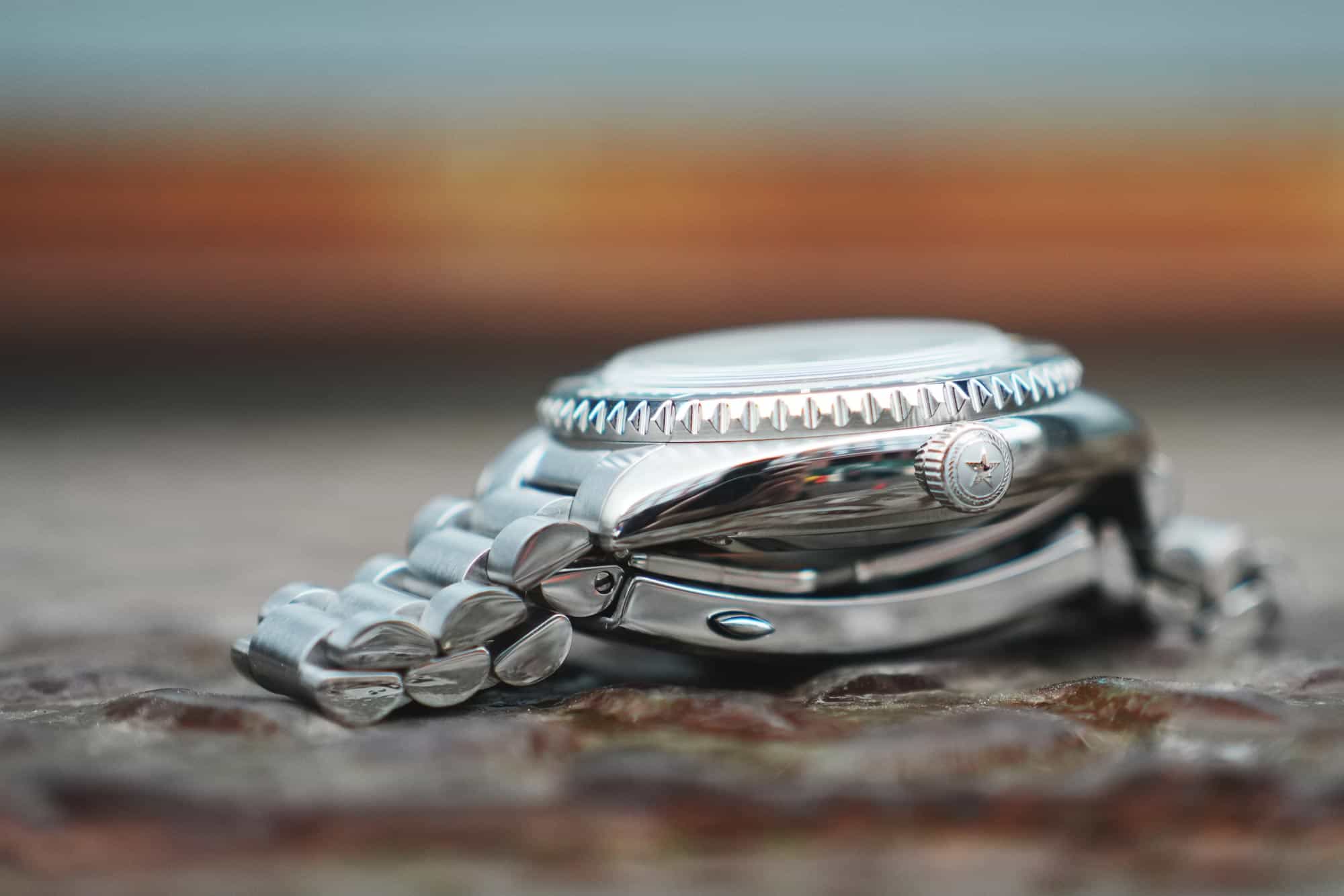I have long believed and said before, on this site and elsewhere, that we are living in the golden age of being a watch enthusiast. As time has passed, the quantity and quality of selection at accessible price points is remarkable. Alongside the influx of collectors are new brands catering to every taste and budget, and therein lies the challenge: how do watch companies stand out and make lasting names for themselves with tool watches in the crowded sub-thousand dollar segment?
Hands On: the Jack Mason Strat-o-timer and Hydrotimer
Texas-based (Dallas represent!) Jack Mason claims to have answers with two of its most prominent models, the travel-ready Strat-o-timer GMT and more recently-released Hydrotimer dive watch. A closer look and hands on provide clues to how these references can set themselves apart from one another and their competition today.
Cases and Bracelets
In a clever move, Jack Mason has decided to utilize the original Strat-o-timer case as the foundation for the Hydrotimer. The turtle-esque cushion style cases measure 40mm wide, 47mm lug-to-lug, and 13mm thick with screw-down crowns. Beyond the obvious economic and manufacturing benefits of sharing a case, this allows the brand to have a recognizable and consistent silhouette across its product lines. Initial impressions of the cases and bracelets are that they are substantial and are of high and obvious quality, especially for the price. In particular, the edges between the brushed and polished surfaces of the case are well-defined and well done. The tolerances where the end links meet the case are also pleasantly exact; there is virtually no play or wiggle room. The Strat-o-timer’s exhibition caseback provides a view of the Miyota 9075 inside (more on that later) compared to the Hydrotimer’s solid and decorated caseback. I was told this difference, as well as a variation in the crystal, account for the Hydrotimer’s additional 100 meters of water resistance.
Hands On: the Jack Mason Strat-o-timer and Hydrotimer
Both watches, as tested, were on one of two bracelet styles (three or seven links across) and came with additional black tropic straps (the leather straps were not tested here). First up, the bracelets. Both are genuinely comfortable, fluid, and well-made if pedestrian in style (which is not necessarily an insult. I’ll choose comfort over complexity every time). The use of female end links is welcome to keep the lug-to-lug length manageable, and both bracelets feature sliding micro-adjustments in the clasp with far more slots than anticipated. This could be helpful – particularly on the Hydrotimer – to accommodate diving suits and for everyday adjustability, but the compromise is in the length of the clasp: it is serviceable on a 6.5 in wrist, but those with smaller wrists may find them a tad long. Decreasing the amount of notches in exchange for a more compact clasp could be a meaningful refinement. A significant portion of the comfort of the bracelets should be attributed to the taper from 20mm to 16mm. Another perk is the inclusion of quick release end links for effortless strap switching. Oh, and there is also a special message printed on the milled portion of the clasp mechanism that owners will appreciate.
The included rubber strap is simply excellent and contains another cool Easter Egg: a Jack Mason star logo acts as the fastening button on the loop to secure the extra strap material. Changing between strap and bracelet was predictably a piece of cake thanks to the quick release bars. Truly there should be a law across the watch industry mandating quick release end links on all watches.
Movements
The Strat-o-timer is among the first generation of watches utilizing the Miyota 9075. For the unfamiliar, this movement is notable for introducing “traveler” or “flyer” GMT functionality – in other words, an independent local jumping hour hand with date – to the masses. This caliber has opened the door for legions of watch companies to build new and interesting GMT watches at price points previously unheard of. Winding, setting, and using the movement on the Strat-o-timer was, unsurprisingly, a breeze. The crown positions were easy to find, and the date functionality advanced with the hands cleanly and smoothly. The watch ran within spec (+/- 5 seconds a day as regulated by Jack Mason). It will be interesting to see how the brand continues to build out its GMT lineup using this movement.
On the other hand, the Hydrotimer is powered by the Miyota 9039. A perfectly competent movement for the money, it remained within specs during the duration of the review. There’s not much else to note on these calibers other than to comment that they are made at scale, are generally reliable, and allow these watches to sit at a very competitive price point considering their designs and specifications.
Dials, Bezels, and Hands
The Strat-o-timer is a real looker, and it’s no surprise how it has been a hit for the folks at Jack Mason. As tested on a 7-link bracelet, the watch reflects copious light from the bracelet, bezel edge, sunburst dial, and hour markers. Speaking of which, the markers themselves are very precisely applied and styled but come very close to touching the minute counters at the 12, 3, 6, and 9 positions. This is somewhat subjective but the result arguably detracts from the cleanness of the dial at those points. Another observation is the effect of the domed crystal on the dial elements, particularly on the edge. For better or worse, the cream colored squares are nearly totally obscured by the distortion caused by the crystal. The same effect also significantly shortens the long minute hashes, only half of which is visible. Regarding dial text, the Strat-o-timer namesake is printed with slick retro styling. Another easily-missed detail is the red, white, and blue motif on the counterbalance of the second hand (catering nicely once again to my Texan heritage and pride). The applied Jack Mason star signature is at 12 o’clock and, for better or worse, takes a backseat relative to the rest of the dial elements. A 3 o’clock date window is framed and sized to match the width of the 9 o’clock hour block to maintain symmetry. As a whole, the dial is interesting and not overly-retro in its aesthetic. It truly feels like an original design.
The Strat-o-timer’s sapphire bezel is configured to what Jack Mason calls “Espresso”. Fair enough, really. The black and brown combination is an attractive pairing, and I definitely can’t think of another beverage name to call it…The insert is on the narrower side and doesn’t overpower the dial side of the watch. In both low light and direct lighting, the cream-lumed numerals on the bezel create a warm vibe and live up to their names. There is, however, a sticking point…literally. This could very well be chalked up to the fact that the tested watch was brand new, but gripping and operating the GMT bezel was not as easy as expected. Each individual click felt satisfying with virtually no backplay, but the stiffness between each notch was considerable. Even after several days of turning it in an effort to loosen things up, using the bezel was still no easy task. This was not the case with the Hydrotimer’s bezel, which was smoother to rotate.
The Hydrotimer is a straightforward affair: silver dial, triangle at twelve, round hour plots all the way around (bisected at 3, 6, and 9), dark gray bezel with cream colored indices. Like the Strat-o-timer, the Hydrotimer is an attractive and inoffensive watch. Due to the relatively smaller round markers and a lack of a chapter ring, the dial furniture (e.g. triangles, hash marks) is visually concentrated even further on the edges where they are once again partially obscured by the sapphire glass. A particular challenge for the Hydrotimer’s dial is a direct result of the sameness in shape and size of the shapes of the markers, circular hour hand, and company logo. With all three circular elements nearly the same size, none of them truly stands to anchor the design in what is a large amount of negative space around the center. This may very well be an intentional decision and isn’t trying to do too much. The fine-grained silver finishing on the dial is an excellent and refreshing departure from a more typical matte or glossy black finish. Taken as a unit, the Hydrotimer’s dial is what you’d expect and doesn’t stray from the archetypal diver’s watch.
On the Wrist
On the wrist and with the bracelets, both watches wear similarly due to their shared cases. The cushion case sits low on the wrist, and its protracted lug to lug length results in a compact fit. As mentioned before, the female end links allow the bracelets to immediately curve downwards. Simply put, this is a watch that wears comfortably for a wide range of watch buyers. It easily fits on my 6.5 in wrist with plenty of room to spare and, thanks to the gliding micro-adjustments, works all day.
On the rubber strap, the watches take on a sportier feel without sacrificing any comfort. Nuff said. To take a brief detour: the fact that straps are included with the watches is just one example of many small ways Jack Mason gets the watch buying and unboxing experience right. The responsibly-sourced book-like box; the soft and high quality complimentary watch pouch; the positive messaging; these are hallmarks of a brand that pays attention to the details in how enthusiasts appreciate the ephemera and overall experience of buying and receiving a new timepiece. Creating a successful brand is more than a product; presentation matters.
Market Context and Final Thoughts
At this point it is obvious that the Jack Mason Strat-o-timer and Hydrotimer are more than competent watches. They look and feel substantial, feature thoughtful touches, and provide solid value. A novice in the watch world looking for a quality mechanical sport watch at a relatively approachable price point can do no wrong with this lineup. Even more seasoned collectors who are looking to add an attractive watch to the collection will be well pleased. But the competition is fiercer than ever, and in a sea of sub-$1000 mid-century inspired tool watches from the likes of Lorier, Baltic, Seiko, Benrus, Zodiac, and others – do Jack Mason watches stand out?
The market will ultimately decide the answer to that question, but there is opportunity and space for Jack Mason to iterate and build on what is a solid, growing collection. Each of the aforementioned brands has developed a mature, distinct, and recognizable design language, and it feels like Jack Mason is in the process of discovering and forging the same thing. What the brand undoubtedly represents is a real commitment to old school quality; now it is their willingness to take risks and creatively push their designs forward that will truly differentiate their watches from all the rest. In the meantime, the Strat-o-timer and Hydrotimer are flag bearers – and good ones at that. If they are forebears for what is to come for enthusiasts in this space, we truly are living in the golden age. Jack Mason









 Featured Videos
Featured Videos




